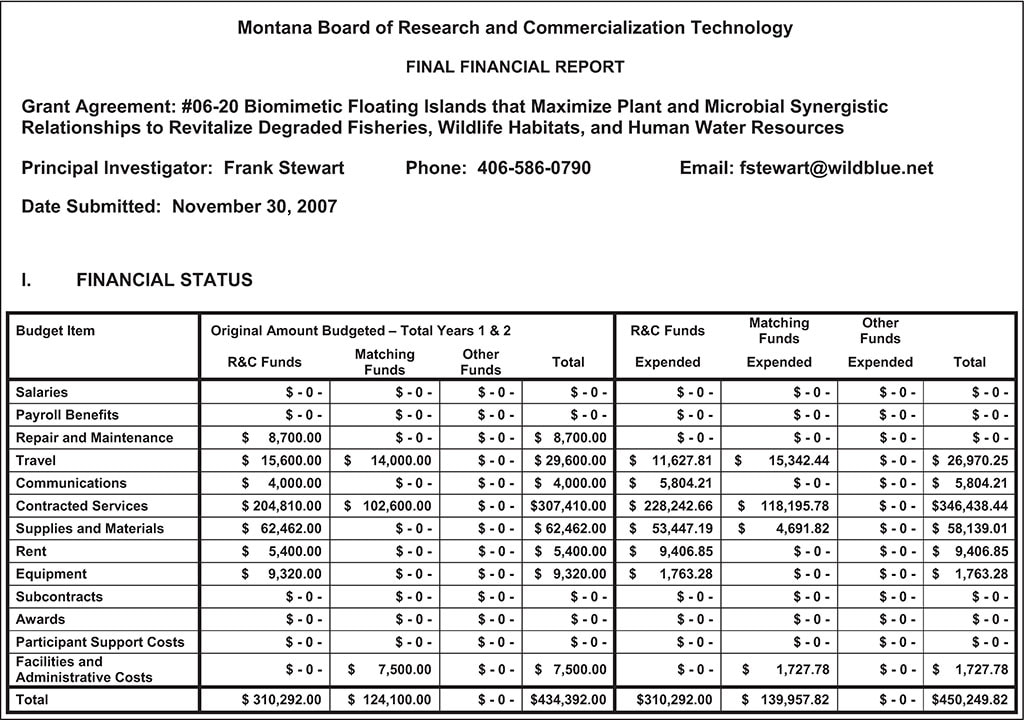Final Report
Montana Board of Research and Commercialization Technology
|
Principal Investigator:
Frank Stewart 406.586.0790 fstewart@wildblue.net Grant Agreement Number: 06-20 Title: Biomimetic floating islands that maximize plant and microbial synergistic relationships to revitalize degraded fisheries, wildlife habitats, and human water resources. Agreement Dates: August 1, 2005 – October 30, 2007 Funding for Year 1: $144,757 Funding for Year 2: $165,535 |
|
Significantly, we also demonstrated that BioHaven® floating islands can remove all of the constituents of concern (ammonium, nitrate, phosphorus, organic carbon and suspended solids) within a single island body. This finding has important ramifications for the treatment of wastewaters, in which simultaneous removal of these constituents can result in lower construction and operating costs.
We conducted literature reviews to determine typical nutrient influent concentrations and target effluent levels in stormwater detention ponds, municipal sewage, and concentrated animal feedlot operation (CAFO) lagoons; then we performed chemical analyses at selected wastewater sites to confirm nutrient concentrations in untreated lagoons. |
